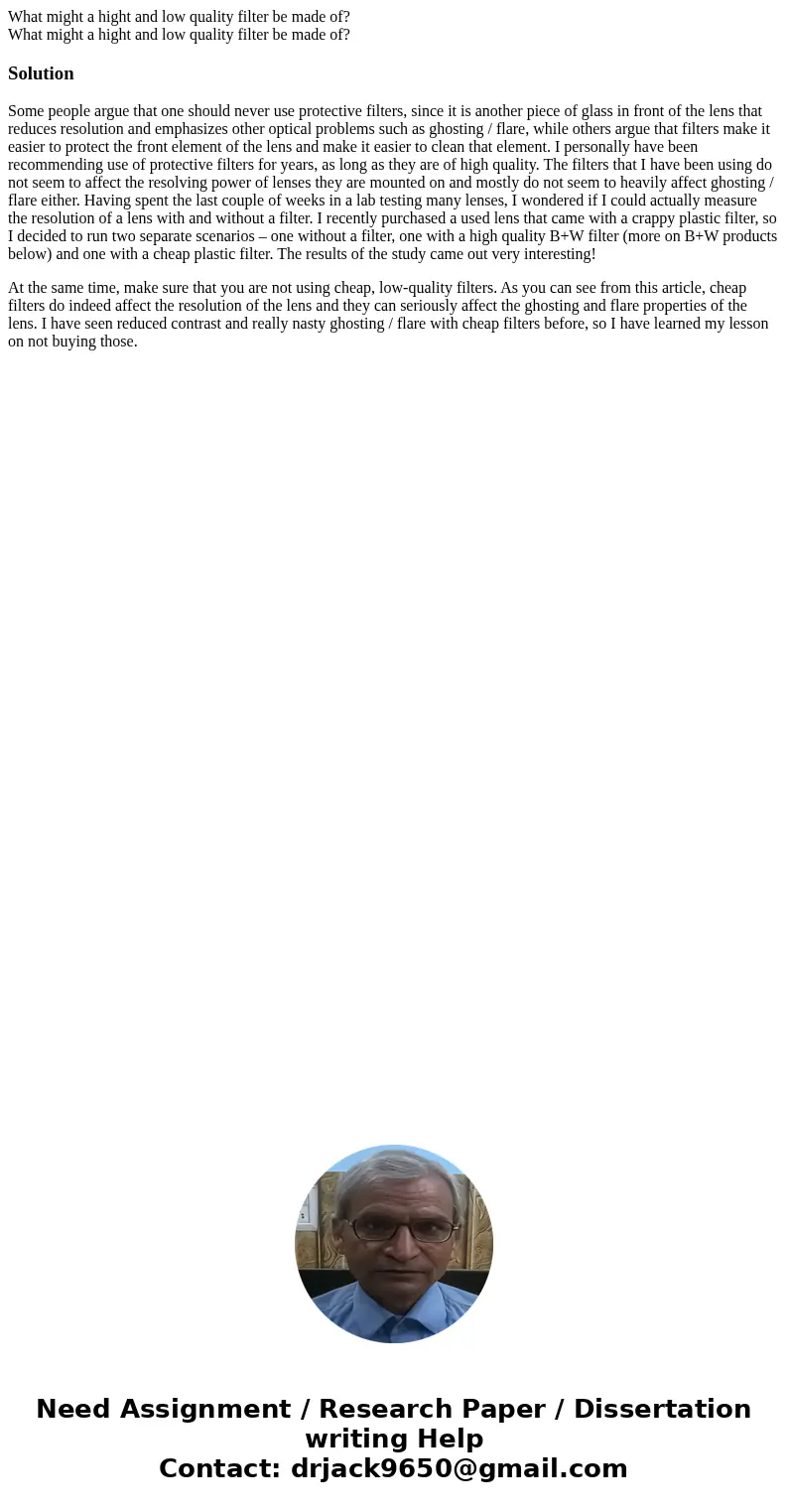What might a hight and low quality filter be made of What mi
Solution
Some people argue that one should never use protective filters, since it is another piece of glass in front of the lens that reduces resolution and emphasizes other optical problems such as ghosting / flare, while others argue that filters make it easier to protect the front element of the lens and make it easier to clean that element. I personally have been recommending use of protective filters for years, as long as they are of high quality. The filters that I have been using do not seem to affect the resolving power of lenses they are mounted on and mostly do not seem to heavily affect ghosting / flare either. Having spent the last couple of weeks in a lab testing many lenses, I wondered if I could actually measure the resolution of a lens with and without a filter. I recently purchased a used lens that came with a crappy plastic filter, so I decided to run two separate scenarios – one without a filter, one with a high quality B+W filter (more on B+W products below) and one with a cheap plastic filter. The results of the study came out very interesting!
At the same time, make sure that you are not using cheap, low-quality filters. As you can see from this article, cheap filters do indeed affect the resolution of the lens and they can seriously affect the ghosting and flare properties of the lens. I have seen reduced contrast and really nasty ghosting / flare with cheap filters before, so I have learned my lesson on not buying those.

 Homework Sourse
Homework Sourse